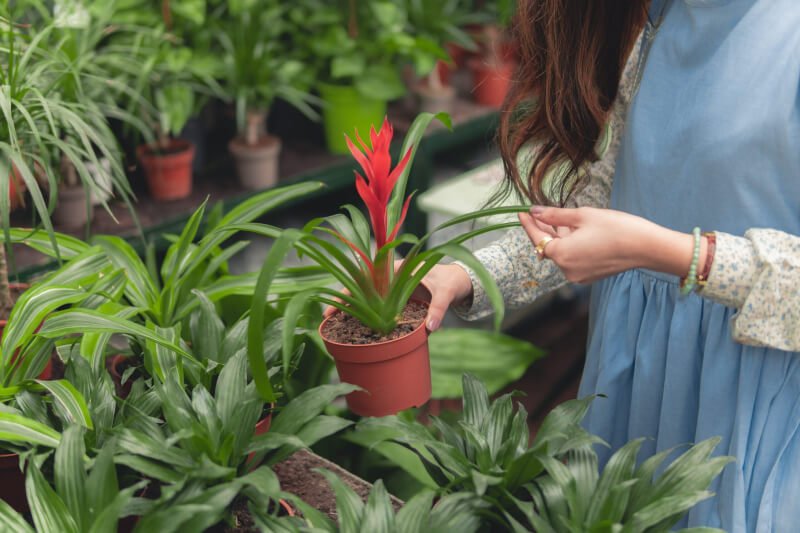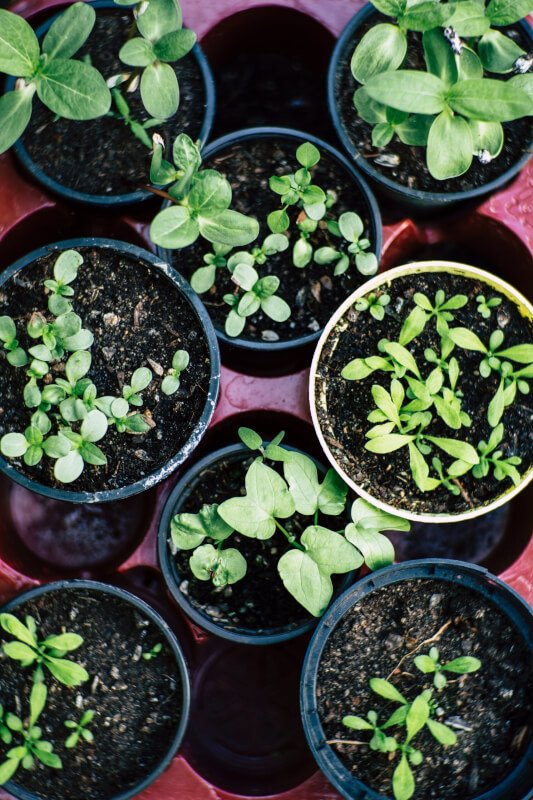Are you a passionate urban gardener facing pesky pests and relentless diseases that threaten to spoil your green haven? Look no further! This article is here to equip you with invaluable tips and tricks to effectively manage these nuisances. Urban gardening can be incredibly rewarding, but it comes with its fair share of challenges. From aphids to fungal infections, we’ll guide you through strategies to keep your plants thriving and your urban garden flourishing. Get ready to bid farewell to pests and diseases as you reclaim your urban oasis!

Understanding Common Pests and Diseases
Identifying common garden pests
One of the first steps in managing pests and diseases in your urban garden is to be able to identify common garden pests. These may include insects such as aphids, caterpillars, and beetles, as well as larger pests like squirrels, rabbits, and birds. It’s important to familiarize yourself with the appearance and habits of these pests so you can take appropriate action when necessary.
Recognizing signs of plant diseases
Plant diseases can have a devastating impact on your garden if left untreated. Knowing how to recognize the signs of common plant diseases is key to preventing their spread. Look out for symptoms such as wilting, leaf spots, discoloration, mold, or stunted growth. Learning to identify these signs will help you take the necessary steps to keep your plants healthy.
Understanding the impact of pests and diseases in urban gardens
Pests and diseases can have a significant impact on urban gardens. Not only can they damage plants and reduce yields, but they can also negatively affect the overall health and productivity of your garden. In urban environments where space may be limited, maintaining a healthy garden is crucial to maximize the benefits of your gardening efforts.
Creating a Healthy Garden Environment
Choosing the right location
Selecting the right location for your urban garden is vital for its success. Consider factors such as sunlight exposure, soil quality, and proximity to potential pest sources. Most plants thrive in full sun, so choose an area that receives at least six hours of direct sunlight each day. Additionally, avoid areas with poor drainage or contaminated soil that may harbor pests or diseases.
Optimizing soil health
Healthy soil is the foundation of a thriving garden. Proper soil management is key to preventing disease and promoting plant growth. Start by testing your soil to assess its pH level and nutrient content. Based on the results, amend the soil with organic matter, such as compost or well-rotted manure, to improve its fertility and structure. Well-draining, nutrient-rich soil will support the growth of strong, disease-resistant plants.
Implementing proper watering techniques
Watering your garden correctly is crucial for preventing both pests and diseases. Overwatering can lead to root rot and create a favorable environment for pests, while underwatering can stress plants and weaken their natural defenses. Water plants deeply and infrequently, allowing the soil to dry out slightly before watering again. Aim to water the base of the plants rather than overhead to minimize the risk of diseases spreading.
Promoting biodiversity
Creating a diverse garden ecosystem can help to naturally control pests and diseases. By incorporating a variety of plant species, you can attract beneficial insects that prey on pests, such as ladybugs or lacewings. Additionally, consider including flowers or herbs that are known to repel pests, such as marigolds or basil. Encouraging biodiversity in your garden helps to create a balanced ecosystem where pests and diseases are less likely to thrive.

Preventing Pests and Diseases
Practicing good garden hygiene
Maintaining good garden hygiene is essential for preventing the spread of pests and diseases. Keep your garden clean and free of debris, and regularly remove any dead or diseased plant material. Properly dispose of prunings and fallen leaves, as these can harbor pests or pathogens. By keeping your garden tidy, you’ll eliminate potential breeding grounds for pests and reduce the risk of disease outbreaks.
Using physical barriers
Physical barriers can be an effective way to prevent pests from accessing your plants. Use netting or fencing to protect your garden from larger pests, such as rabbits or birds. Insect netting or row covers can also be used to shield plants from smaller pests like aphids or caterpillars. These barriers create a physical barrier that pests cannot penetrate, reducing the likelihood of damage or infestations.
Encouraging beneficial insects
Beneficial insects are nature’s pest control, and attracting them to your garden can significantly reduce pest populations. Planting flowering plants, such as daisies or sunflowers, can attract beneficial insects like bees and predatory wasps. Additionally, consider incorporating plants that provide shelter, such as ornamental grasses, to attract predatory insects like lacewings or ground beetles. By providing a habitat for these beneficial insects, you’ll create a natural pest control system in your garden.
Rotating crops
Crop rotation is a practice that involves changing the placement of plants from one year to the next. This technique disrupts the life cycles of pests and diseases that may have overwintered in the soil or plant residues. By rotating your crops, you can reduce the buildup of pests or pathogens that are specific to certain plant families. This practice helps maintain soil health and minimize the risk of plant diseases.
Choosing disease-resistant plant varieties
Selecting disease-resistant plant varieties is a proactive way to prevent diseases in your garden. Look for plant varieties that have been bred for resistance to common diseases prevalent in your area. Disease-resistant plants have built-in mechanisms to resist infection, reducing the likelihood of disease outbreaks in your garden. Consult with local nurseries or gardening experts to find the best disease-resistant varieties for your urban garden.
Natural and Organic Pest Control Methods
Attracting pest predators
Attracting natural predators to your garden is an effective way to control pests without resorting to chemicals. Plant flowers, such as yarrow or dill, that attract predator insects like ladybugs or praying mantises. Additionally, consider providing shelter, such as bug hotels or birdhouses, to encourage beneficial insects and birds to take up residence in your garden. These natural predators will help keep pest populations in check, reducing the need for chemical intervention.
Using companion planting
Companion planting involves growing different plant species together that have mutually beneficial relationships. Some plants naturally repel pests, while others attract beneficial insects or improve soil health. For example, planting marigolds near tomato plants can repel nematodes, while growing basil alongside peppers can deter aphids. By strategically incorporating companion plants in your garden, you can naturally deter pests and enhance the overall health of your plants.
Applying organic insecticides
When necessary, organic insecticides can be used to control pest infestations in a safe and environmentally friendly manner. Organic insecticides derived from substances such as neem oil, pyrethrin, or diatomaceous earth can effectively target pests while causing minimal harm to beneficial insects and the ecosystem. However, it’s important to follow the instructions carefully and use these products sparingly to minimize any potential negative impact on your garden.
Making homemade pest repellents
Homemade pest repellents can be an affordable and chemical-free alternative to commercial products. Common ingredients such as garlic, chili peppers, or soap can be mixed with water to create sprays that deter pests. For example, a mixture of crushed garlic and water can be used to repel aphids or caterpillars. Experiment with different homemade repellents to find what works best for your garden and the specific pests you’re dealing with.
Utilizing biological controls
Biological controls involve introducing natural enemies of pests into your garden to control their populations. This can include releasing predatory insects, such as ladybugs or lacewings, or using beneficial nematodes to target soil-dwelling pests. These biological controls are safe, environmentally friendly, and can provide long-term pest control when properly implemented. Consult with local garden centers or extension services to learn more about the biological control options available for your specific pest problems.

Integrated Pest Management Techniques
Monitoring pest populations
Regularly monitoring pest populations in your garden is crucial for effective pest management. Inspect your plants for signs of pests or damage, and keep a record of the pests you encounter. This information will help you determine the extent of the infestation and the most appropriate course of action to take.
Setting action thresholds
Setting action thresholds involves determining the point at which pest populations or damage levels require intervention. This threshold may vary depending on the specific plant and pest involved. By establishing action thresholds, you can avoid unnecessary or premature pesticide applications, allowing natural control methods to take effect before resorting to chemical control.
Implementing cultural control methods
Cultural control methods involve modifying cultural practices to prevent or reduce pest populations. Techniques such as proper pruning, removing infected plant material, or adjusting watering schedules can create less favorable conditions for pests to thrive. For example, pruning can improve airflow and sunlight penetration, reducing the risk of fungal diseases.
Using mechanical control techniques
Mechanical control techniques involve physically removing pests from plants or creating barriers to prevent access. Handpicking caterpillars or physically removing snails can be effective for small-scale infestations. Additionally, sticky traps or copper tape can be used to deter crawling pests. Mechanical control methods are often low-cost and environmentally friendly alternatives to chemical interventions.
Resorting to chemical control as a last resort
Chemical control methods should only be used as a last resort when all other management strategies have failed. If pest populations exceed action thresholds and are causing significant damage, carefully selected chemical controls may be necessary. When using chemical pesticides, always follow label instructions, wear protective gear, and be mindful of the potential risks to beneficial insects, human health, and the environment.
Identifying and Treating Common Plant Diseases
Identifying fungal diseases
Fungal diseases are common in gardens and can affect a wide range of plants. Some common fungal diseases include powdery mildew, leaf spot, and blight. These diseases are characterized by visible signs such as discolored or distorted leaves, moldy growth, or lesions on stems or fruits. Proper identification of the specific fungal disease is crucial for implementing effective treatment measures.
Managing viral diseases
Viral diseases can be challenging to manage in a garden setting. They are often spread by insects or through infected planting material. Symptoms of viral diseases may include stunted growth, yellowing or mottled leaves, or distorted fruits. Unfortunately, there are no cures for viral diseases, so prevention through proper sanitation practices and growing disease-resistant varieties is key.
Dealing with bacterial infections
Bacterial infections can cause a variety of symptoms in plants, including wilting, leaf spots, or cankers. These infections are often spread through wounds or by contaminated tools or irrigation water. To manage bacterial infections, it’s important to remove and destroy infected plant parts, practice good sanitation, and avoid overhead watering, which can promote disease spread.
Preventing the spread of diseases
Preventing the spread of diseases is crucial for maintaining a healthy garden. Plant diseases can easily spread through contaminated tools, clothing, or even on the wind. Practice good sanitation by cleaning and sterilizing your gardening tools regularly. Avoid working in wet conditions, as water can facilitate disease transmission. Additionally, properly dispose of infected plant material to prevent diseases from overwintering in your garden.
Implementing effective disease management strategies
Managing plant diseases requires a multi-faceted approach. Combine cultural practices, such as crop rotation, proper watering, and sanitation, with targeted treatments when necessary. Fungicides or bactericides can be used to manage severe infections, but should be used as a last resort. Consult with local gardening experts or extension services to develop an effective disease management plan for your specific garden.
Composting Practices for Disease Prevention
Proper composting techniques
Composting is a valuable practice for replenishing soil nutrients and improving overall soil health. To ensure disease prevention, follow proper composting techniques. Use a balanced mix of brown (carbon-rich) and green (nitrogen-rich) materials, such as leaves, grass clippings, and kitchen scraps. Turn the compost regularly to promote decomposition and minimize disease risks.
Using disease-free materials
To prevent the introduction of diseases into your compost pile, only use disease-free plant materials. Avoid adding diseased or pest-infested plant debris, as these can harbor pathogens that may survive the composting process. Additionally, be cautious when adding parts of diseased plants to your compost, as some pathogens can survive under certain conditions.
Ensuring proper composting temperatures
Proper composting temperatures help kill pathogens and weed seeds. Monitor the temperature of your compost pile using a thermometer. Aim for temperatures between 130 and 150 degrees Fahrenheit to ensure effective composting. Higher temperatures will aid in the destruction of pathogens, reducing the risk of disease spread.
Turning the compost regularly
Regularly turning the compost is important for maintaining aerobic conditions and accelerating decomposition. Turning the pile allows oxygen to reach the microorganisms responsible for breaking down the organic matter. This promotes faster decomposition and helps create an inhospitable environment for pathogens that thrive in stagnant conditions.
Applying compost at the right time
When applying compost to your garden, timing is crucial. Mature compost should be well-rotted and fully decomposed to prevent the introduction of pathogens or weed seeds. Incorporate compost into the soil before planting or as a side dressing for established plants. Avoid applying fresh, unfinished compost, as it may contain harmful pathogens.
Recognizing Signs of Pest Infestation
Identifying common pest damage
Understanding the signs of pest damage is essential for early detection and intervention. Common signs of pest damage include chewed leaves, holes in foliage, or missing plant parts. Some pests leave distinctive feeding patterns, such as skeletonized leaves or webbing. Regularly inspect your plants and look for signs of infestation to take appropriate action.
Noticing pest eggs, larvae, or adults
Pests go through specific life stages, and recognizing these stages can help identify infestations. Eggs, larvae, or adults of pests may be present on your plants. Eggs are often laid on leaves or stems, larvae may be feeding actively on foliage, and adults may be flying or crawling on the plants. Familiarize yourself with the life cycles of common pests in your area to spot infestations early.
Observing abnormal growth or discoloration
Certain pests can cause abnormal growth or discoloration in plants. For example, infestations by aphids or scales can lead to distorted or curling leaves. Spider mites can cause the foliage to turn yellow or dusty. These changes in plant appearance can indicate the presence of pests and prompt action to control the infestation.
Identifying feeding patterns
Different pests have distinct feeding patterns, and recognizing these patterns can help narrow down the potential pest culprit. Some pests, like caterpillars, may leave irregular holes or chewed edges on leaves, while others, like aphids, often cause distortion or curling of foliage. Understanding these feeding patterns can aid in identifying the pest and selecting the appropriate control method.
Detecting pest presence through traps
Using traps can be an effective way to monitor and detect pests in your garden. Yellow sticky traps or pheromone traps can attract and catch flying pests, such as flies or moths. These traps provide an early warning system, allowing you to take action before pest populations become severe. Place traps strategically throughout your garden to maximize their effectiveness.
Early Intervention and Treatment
Acting promptly upon pest detection
Early intervention is crucial when dealing with pests in your urban garden. As soon as you detect signs of infestation or pest damage, take prompt action to prevent the problem from escalating. The longer you delay, the more time pests have to reproduce and spread, making control more challenging.
Using non-toxic intervention methods
Whenever possible, opt for non-toxic intervention methods to manage pest infestations. Mechanical methods like handpicking pests, using insect traps, or introducing natural predators are effective and environmentally friendly options. Non-toxic treatments minimize the risks associated with chemical pesticides and preserve the balance of beneficial insects in your garden.
Pruning affected plant parts
If a plant is severely infested or if the damage is localized, consider pruning affected plant parts. This can help remove the source of the pest infestation and promote healthy regrowth. Prune infested leaves, stems, or branches and dispose of them properly to prevent the spread of pests and diseases.
Applying targeted treatments
In some cases, targeted treatments may be necessary to control pest infestations. When using pesticides, choose those specific to the pest you’re dealing with and follow label instructions carefully. Spot treatments or spraying affected areas can be effective in managing localized infestations while minimizing the impact on beneficial insects and the environment.
Using biological control agents
Biological control agents, such as nematodes or microbial insecticides, can be used to manage pest infestations in a natural and targeted manner. These organisms specifically target pests while posing minimal risks to humans, wildlife, and the ecosystem. Consider incorporating biological control agents into your pest management strategy to reduce reliance on chemical pesticides.
Educating Yourself and Seeking Expert Advice
Staying informed about pests and diseases
Continuing education about pests and diseases is essential for effective gardening practices. Stay updated on the latest research, best management practices, and emerging pest or disease threats. Subscribe to gardening magazines or online newsletters focused on urban gardening to receive timely information and tips to protect your garden.
Participating in gardening workshops
Gardening workshops provide valuable opportunities to learn from experts and share experiences with other gardeners. Attend workshops or webinars offered by local garden centers, universities, or community organizations. These events often cover a wide range of topics, including pest management, disease prevention, and sustainable gardening practices.
Consulting with local gardening experts
Consulting with local gardening experts can provide valuable insights tailored to your specific region and garden conditions. Visit local garden centers or contact horticultural extension offices to seek advice from knowledgeable professionals. They can help you identify pests or diseases, recommend appropriate treatment methods, and offer guidance on managing your urban garden effectively.
Reaching out to extension services
Extension services are an invaluable resource for home gardeners. Cooperative Extension offices, affiliated with universities, provide research-based information and expertise in various areas, including pest management. Reach out to your local extension office for assistance with pest identification, diagnosis of plant diseases, or recommendations for integrated pest management strategies.
Joining gardening communities for support
Joining gardening communities, whether online or in-person, can provide a supportive network of fellow gardeners who can offer guidance and share their experiences. Engaging with others who have faced similar pest or disease challenges can help you discover effective solutions and gain valuable insights to enhance your gardening skills.
By understanding common pests and diseases, creating a healthy garden environment, preventing infestations, and implementing effective treatment strategies, you can manage pests and diseases in your urban garden successfully. Stay informed, be proactive, and seek expert advice when needed to ensure that your garden thrives and remains a source of joy and abundance. Happy gardening!


